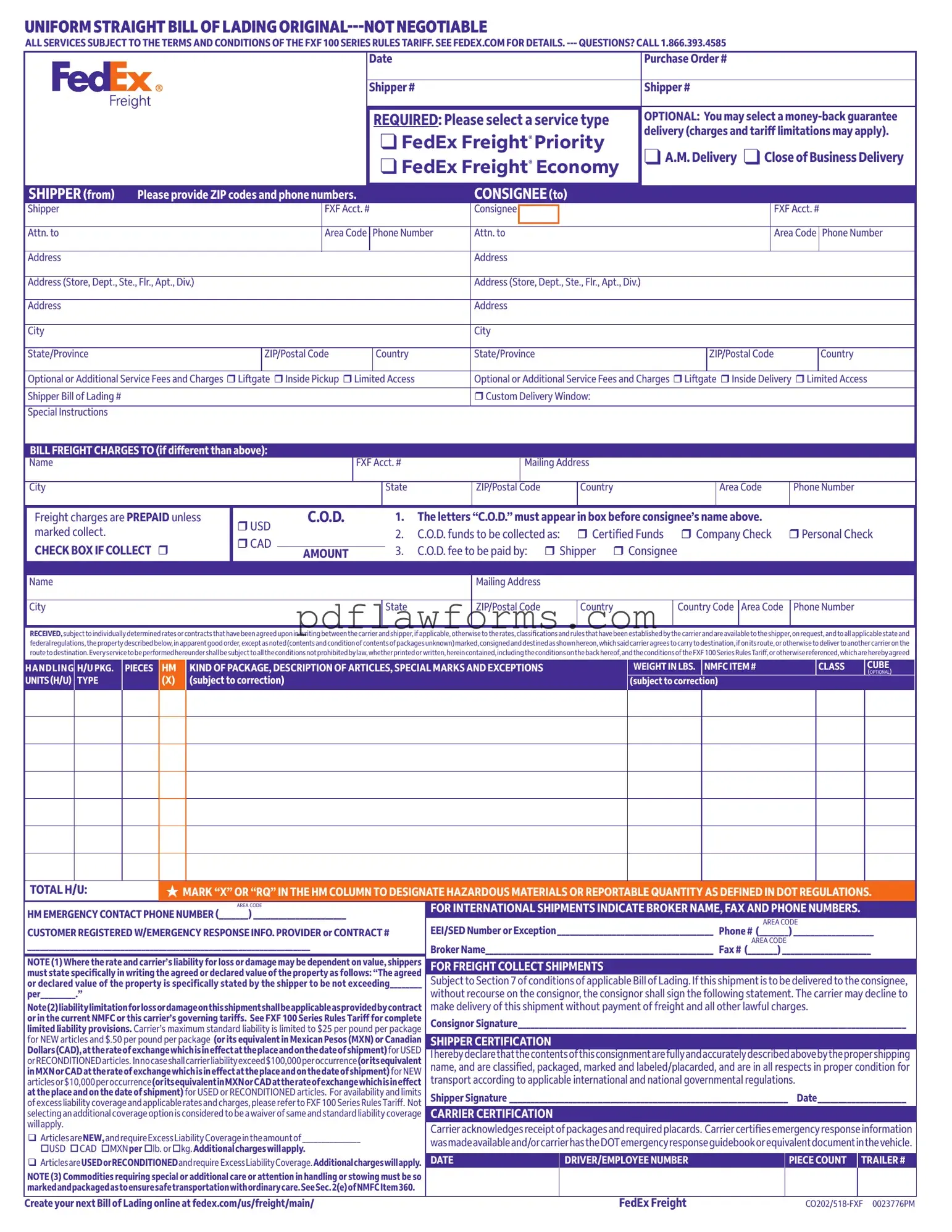Filling out the FedEx Bill of Lading form accurately is crucial for ensuring smooth shipping operations. However, many individuals make common mistakes that can lead to delays or additional charges. Here are six frequent errors to avoid.
First, one of the most prevalent mistakes is failing to provide complete contact information for both the shipper and the consignee. Each section requires specific details, including names, addresses, and phone numbers. Omitting any of this information can cause confusion and hinder delivery. Ensure that all fields are filled out thoroughly.
Second, many people overlook selecting the appropriate service type. The form offers various options, such as FedEx Freight Priority and Economy. Choosing the wrong service can result in unexpected charges or delays. Always double-check the service type before submitting the form.
Another common error involves not marking hazardous materials correctly. If your shipment contains hazardous materials, it’s essential to mark “X” or “RQ” in the designated column. Failing to do so may lead to serious safety issues and regulatory complications.
Additionally, individuals often neglect to specify the billing information accurately. If the freight charges are to be billed to someone other than the shipper, this must be clearly indicated. Miscommunication regarding billing can lead to payment disputes and delays in processing.
Moreover, not declaring the value of the shipment can be a costly oversight. For freight collect shipments, it is essential to state the agreed or declared value. This protects both the shipper and the carrier in case of loss or damage. Without this declaration, liability limits may apply, which could result in financial loss.
Lastly, many people fail to review the entire form before submission. Simple typographical errors can lead to significant issues down the line. Taking a moment to review all entries can save time and prevent potential complications.
By avoiding these mistakes, individuals can ensure a smoother shipping experience with FedEx. Always take the time to fill out the Bill of Lading form carefully and accurately.
